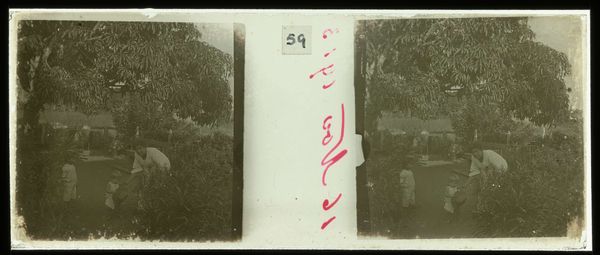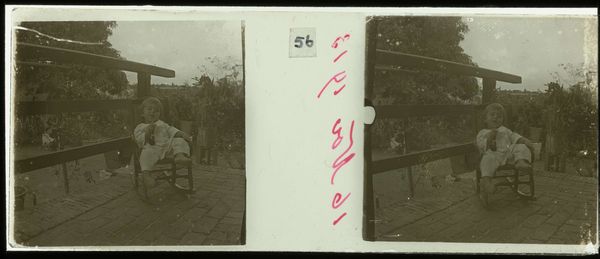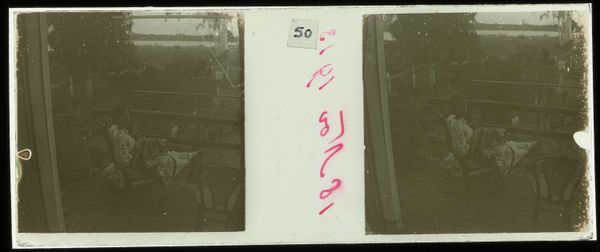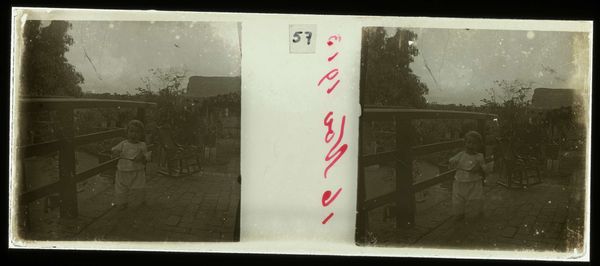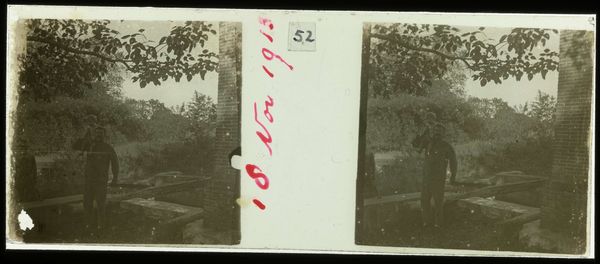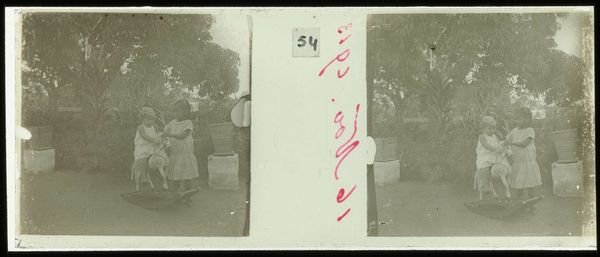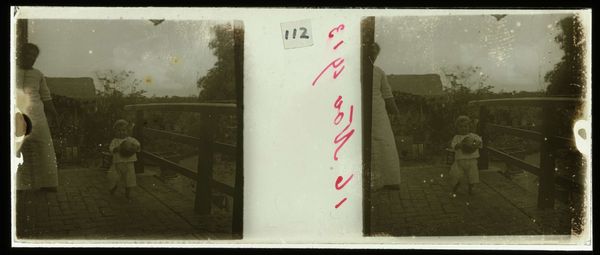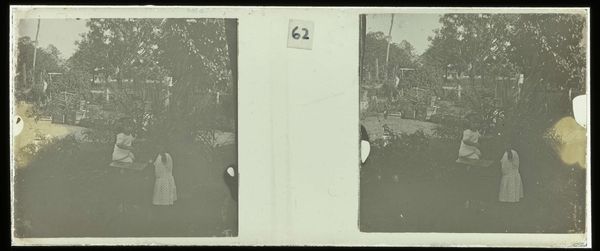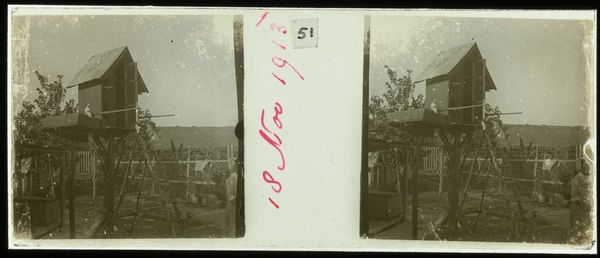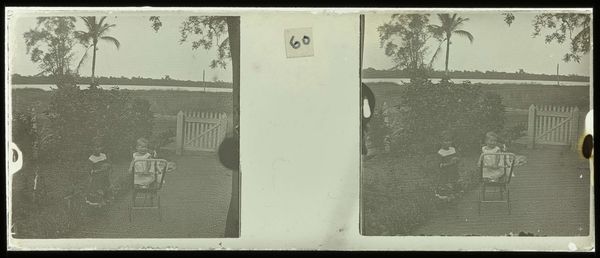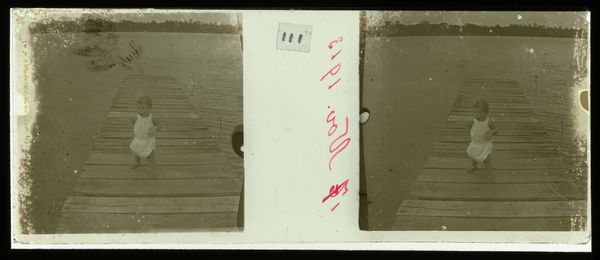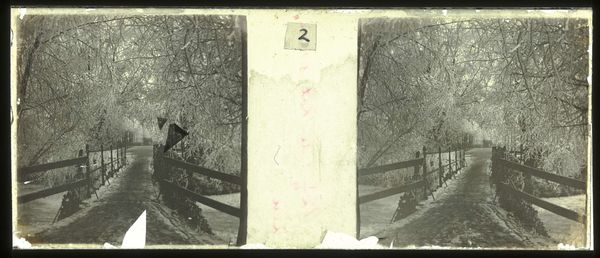
photography, photomontage
#
portrait
#
water colours
#
photography
#
photomontage
Dimensions: height 4.5 cm, width 10.5 cm
Copyright: Rijks Museum: Open Domain
Curator: Oh, isn't that interesting! The monochrome instantly makes me feel like I'm peering into a distant memory. What a delightful depiction of childhood innocence, bathed in an antique sepia. Editor: Indeed! This photographic slide, possibly from 1913, offers us a poignant glimpse into plantation life through Theodoor Brouwers’ "Plantage Accaribo," now held in the Rijksmuseum collection. Its composition strikes me, first, by offering the chance to see the art in both slides; so, like early attempts at cinema, there are two slightly altered views of one scene in this photo-montage, inviting a 3D visual. Curator: It feels like stepping into a scene from a novel, doesn’t it? There’s this lone figure, a child perched on a rocking horse, against a backdrop of, what I presume, are luscious plantation grounds. But this muted tone...it evokes a feeling of longing. A very intimate moment, yet seen from so far away. What were these kinds of family documents doing to record at the time? It certainly evokes complex emotions in our contemporary setting. Editor: Absolutely, and to your question, in this context, these photographic images were powerful tools for projecting colonial fantasies and maintaining social hierarchies. This isn't simply a snapshot of childhood innocence; it's a carefully constructed image reflecting power dynamics inherent in plantation societies. The act of photographing becomes an act of possession and control. You can see the European's position in power throughout. It looks rather dream-like for some and maybe for the child portrayed here as well but remember there were those whose dreams turned to nightmares on this land and in similar environments, also portrayed at the time. Curator: Right, I see the layering in what you’re saying – the personal intertwined with broader narratives. It’s there even in the light and shadow, adding another layer to a deceptively simple moment, complicating those innocent feelings. There’s a story in those details; what do you think of that number '58' handwritten onto the negative? Any importance? It looks out of place like an inventory item. Editor: Numbers often signify cataloging; this number possibly indexes it within a colonial archive, transforming individual lives into data points within a larger imperial project. By understanding that one photograph becomes enmeshed in a bigger bureaucratic story, then the piece gains meaning. If the date holds, photography's role here lies in bolstering control. Curator: Food for thought. Ultimately, I'm moved by its emotional complexity. Editor: Likewise, the photograph serves as a stark reminder of how visual representation has been—and continues to be—complicit in shaping social perceptions and power structures. The tension between colonial nostalgia and critical examination makes for powerful insights into the image's lasting effects.
Comments
No comments
Be the first to comment and join the conversation on the ultimate creative platform.
